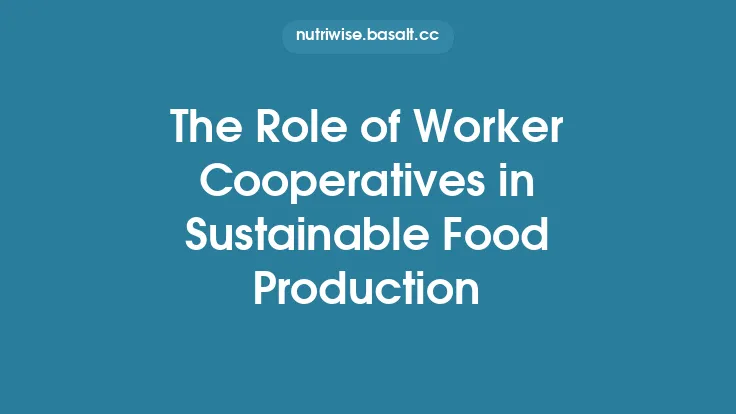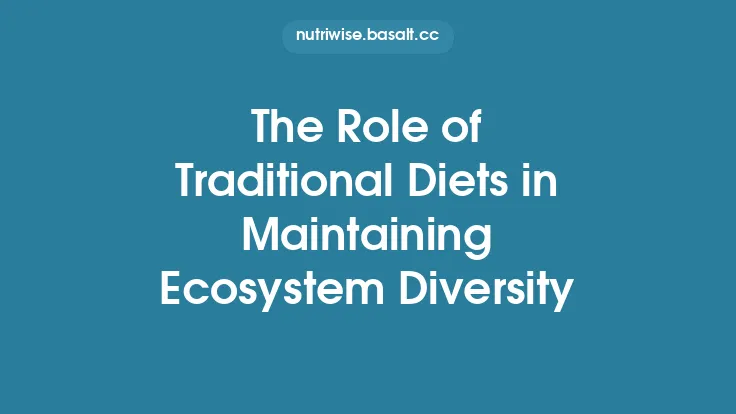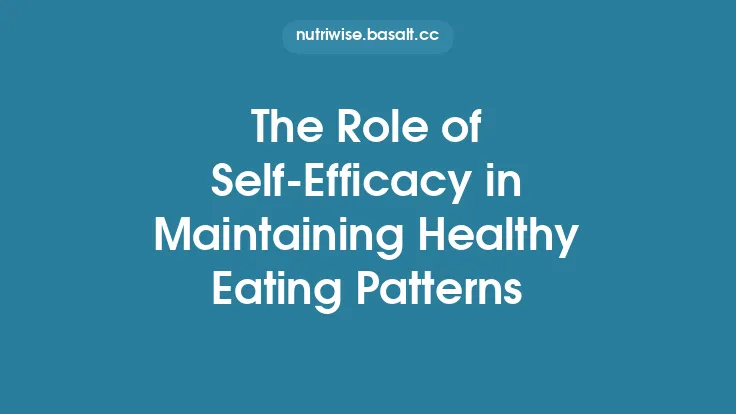Holistic grazing—sometimes called holistic planned grazing or adaptive multi‑species grazing—is a management framework that views livestock, plants, soil, water, and climate as interconnected components of a living system. Rather than treating animals merely as a source of meat, milk, or fiber, holistic grazing positions them as active agents that can stimulate plant growth, improve soil structure, and enhance biodiversity when their movements are carefully timed and distributed across the landscape. This perspective emerged from the broader regenerative agriculture movement, which seeks to restore ecosystem functions that conventional, input‑heavy systems often degrade. By aligning grazing patterns with natural ecological processes, farmers can transform overgrazed, compacted pastures into resilient, productive ecosystems that sequester carbon, retain water, and support a rich tapestry of flora and fauna.
Understanding Holistic Grazing Principles
At its core, holistic grazing rests on three interrelated principles:
- Mobility – Livestock are moved frequently, allowing them to graze a small area intensively before moving on. This mimics the natural foraging behavior of wild herbivores, which create a mosaic of grazed and ungrazed patches.
- Rest and Recovery – After grazing, each pasture segment receives a rest period long enough for plants to regrow, re‑establish root systems, and replenish carbohydrate reserves. The length of rest is dictated by climate, plant species, and soil moisture.
- Diversity of Species and Functional Groups – Incorporating multiple livestock species (e.g., cattle, sheep, goats, and even poultry) leverages their differing grazing preferences and behaviors, reducing the risk of selective overgrazing and promoting a broader range of plant species.
These principles are operationalized through a planning cycle that integrates real‑time observations, seasonal forecasts, and long‑term goals for ecosystem health.
Key Components of Holistic Planned Grazing
1. Stocking Density and Animal Units
Stocking density is expressed in animal units (AU) per hectare. An AU typically represents a 500‑kg mature cow, but adjustments are made for smaller or larger animals. Determining the appropriate density involves:
- Carrying Capacity Assessment – Estimating the maximum number of AUs the land can support without causing degradation, based on historic productivity, rainfall patterns, and soil type.
- Dynamic Adjustment – Scaling the herd up or down in response to seasonal forage availability, drought conditions, or recovery rates.
2. Paddock Design and Spatial Layout
Effective paddock design balances the need for intensive grazing with the logistical constraints of moving animals. Common configurations include:
- Rotational Paddocks – Fixed sections that are grazed sequentially.
- Mob Grazing – Flexible, temporary paddocks created by moving portable fencing (e.g., electric tape) to follow forage growth.
- Multi‑Species Zones – Areas where different species graze simultaneously or in succession, each targeting specific plant layers (e.g., goats on shrubs, cattle on grasses).
3. Timing and Rest Intervals
Rest intervals are calculated using the “growth‑recovery” model:
\[
\text{Rest Days} = \frac{\text{Desired Plant Height Recovery}}{\text{Average Daily Growth Rate}}
\]
For example, if a grass species grows 2 cm per day and the target post‑grazing height is 10 cm, a 5‑day rest may be sufficient under optimal moisture. However, in arid periods, growth rates drop dramatically, extending the required rest.
4. Monitoring Indicators
Holistic grazing relies on a suite of ecological indicators to gauge system health:
- Plant Cover and Species Composition – Visual assessments and point‑intercept methods track changes in biodiversity.
- Soil Compaction – Penetrometer readings identify zones of excessive pressure.
- Soil Organic Matter (SOM) – Periodic soil sampling quantifies carbon content.
- Water Infiltration – Double‑ring infiltrometers measure the rate at which water enters the soil profile.
These data feed back into the grazing plan, allowing for adaptive management.
Ecological Benefits for Pasture Ecosystems
1. Enhanced Soil Structure
When livestock graze, they deposit manure and urine, which act as natural fertilizers and stimulate microbial activity. The trampling action, when moderated by appropriate rest periods, encourages the formation of stable soil aggregates. These aggregates improve pore space, facilitating root penetration and water movement.
2. Increased Biodiversity
Selective grazing reduces dominance by aggressive grass species, opening niches for legumes, forbs, and native grasses. Multi‑species grazing further diversifies the plant community by targeting different vegetation layers. A more diverse plant base supports pollinators, predatory insects, and ground‑nesting birds, creating a self‑reinforcing ecological network.
3. Water Retention and Flood Mitigation
Healthy root systems increase the soil’s capacity to absorb and store rainfall. In holistic grazing systems, the improved infiltration reduces surface runoff, lowering the risk of erosion and downstream flooding. Over time, the landscape can develop micro‑depressions that act as natural water reservoirs during dry spells.
4. Carbon Sequestration
While the primary focus of holistic grazing is ecosystem resilience, the process of building SOM inherently captures atmospheric CO₂. Studies have shown that well‑managed grazing can increase SOM by 0.5–1.5 % per decade, translating to several tonnes of carbon per hectare stored in the soil profile.
5. Pest and Disease Regulation
A heterogeneous plant community disrupts the life cycles of pasture pests and pathogens. For instance, legumes can host beneficial rhizobia that outcompete nitrogen‑fixing weeds, while diverse forbs may attract predatory insects that keep pest populations in check.
Implementing Holistic Grazing on the Ground
Step 1: Baseline Assessment
- Map the Landscape – Use GIS or simple hand‑drawn maps to delineate topography, water sources, and existing vegetation zones.
- Soil Testing – Determine baseline SOM, pH, and nutrient levels.
- Historical Data Review – Gather records of past stocking rates, rainfall, and any previous grazing practices.
Step 2: Define Goals
Goals should be specific, measurable, achievable, relevant, and time‑bound (SMART). Examples include:
- Increase SOM by 1 % within five years.
- Achieve 80 % native plant cover across the pasture.
- Reduce runoff volume by 30 % during peak storm events.
Step 3: Design the Grazing Plan
- Select Livestock Mix – Choose species that complement each other’s foraging habits.
- Allocate Paddocks – Assign each paddock a target grazing duration (e.g., 2–4 days) and rest period (e.g., 30–45 days), adjusting for seasonal growth rates.
- Create Mobility Infrastructure – Install portable fencing, water troughs, and shade structures that can be relocated as needed.
Step 4: Execute and Observe
- Move Livestock – Follow the schedule, but remain flexible. If a paddock shows signs of stress (e.g., excessive trampling, reduced regrowth), extend the rest.
- Record Data – Keep a grazing log noting dates, animal numbers, weather conditions, and visual observations of plant health.
Step 5: Review and Adapt
At the end of each grazing cycle (typically quarterly), analyze the collected data against the defined goals. Adjust stocking density, paddock size, or rest intervals accordingly. This iterative loop is the essence of the holistic approach.
Monitoring and Adaptive Management
Effective monitoring blends low‑tech field observations with occasional high‑tech assessments:
- Field Walks – Conduct weekly walks to note plant vigor, animal behavior, and signs of erosion.
- Remote Sensing – Use drone imagery or satellite NDVI (Normalized Difference Vegetation Index) to quantify vegetation greenness across the entire property.
- Soil Probes – Deploy in‑situ sensors that continuously record moisture, temperature, and electrical conductivity, providing real‑time feedback on soil conditions.
When indicators reveal a deviation from desired trajectories—such as declining plant cover or increasing soil compaction—managers can intervene promptly, perhaps by reducing herd size, increasing rest periods, or introducing a different livestock species.
Case Studies and Real‑World Outcomes
1. The High Plains Ranch (Colorado, USA)
A 2,500‑acre cattle operation transitioned from continuous grazing to a holistic planned grazing system in 2015. Over eight years, they reported:
- SOM Increase – From 2.8 % to 4.2 % (a 50 % rise).
- Forage Yield Boost – Average dry‑matter production rose from 2,800 kg/ha to 4,100 kg/ha.
- Water Infiltration – Measured infiltration rates doubled, reducing runoff during summer thunderstorms.
2. Mixed‑Species Pasture in the Canterbury Plains (New Zealand)
A dairy farm introduced a mix of cattle, sheep, and alpacas, rotating them across 30 paddocks. Outcomes after five years included:
- Biodiversity Gains – Native tussock grasses expanded from 15 % to 45 % of ground cover.
- Reduced Input Costs – Fertilizer use dropped by 30 % due to natural nitrogen fixation by legumes encouraged by diversified grazing.
- Animal Health – Incidence of foot rot decreased, attributed to drier, healthier pasture conditions.
These examples illustrate that holistic grazing can deliver tangible ecological and economic benefits when applied consistently and adaptively.
Challenges and Considerations
While the potential of holistic grazing is substantial, practitioners must navigate several hurdles:
- Labor Intensity – Frequent animal movement demands more time and coordination than traditional continuous grazing.
- Infrastructure Investment – Portable fencing, water systems, and monitoring tools require upfront capital.
- Knowledge Gap – Successful implementation hinges on understanding plant phenology, soil science, and animal behavior, which may be outside the expertise of some farmers.
- Climate Variability – Droughts or extreme rainfall can disrupt growth cycles, necessitating rapid plan adjustments.
- Regulatory Constraints – In some regions, land‑use policies or grazing permits may limit the flexibility needed for holistic approaches.
Addressing these challenges often involves collaborative learning networks, extension services, and peer‑to‑peer mentorship programs that share best practices and troubleshooting strategies.
Future Directions in Regenerative Pasture Management
The evolution of holistic grazing is being shaped by emerging technologies and interdisciplinary research:
- Precision Livestock Management – GPS collars and real‑time location data enable fine‑scale tracking of animal movement, allowing managers to fine‑tune grazing pressure.
- Soil Microbiome Mapping – Metagenomic analyses reveal how grazing influences microbial community composition, offering new metrics for soil health beyond SOM.
- Integrative Modeling – Decision‑support tools combine climate forecasts, plant growth models, and animal nutrition requirements to generate optimized grazing schedules.
- Policy Incentives – Emerging carbon credit schemes and regenerative agriculture subsidies are beginning to recognize and reward the ecosystem services generated by holistic grazing.
As these innovations mature, they promise to lower the barriers to adoption, enhance the precision of management decisions, and amplify the climate‑mitigation potential of pasture ecosystems.
Holistic grazing stands as a cornerstone of regenerative agriculture, turning livestock from a potential stressor into a catalyst for ecological renewal. By orchestrating animal movement, rest periods, and species diversity, farmers can rebuild soil structure, foster biodiversity, improve water dynamics, and sequester carbon—all while maintaining productive, resilient pastures. The approach demands careful planning, ongoing observation, and a willingness to adapt, but the rewards—both environmental and economic—make it a compelling pathway toward truly sustainable and ethical food production.





